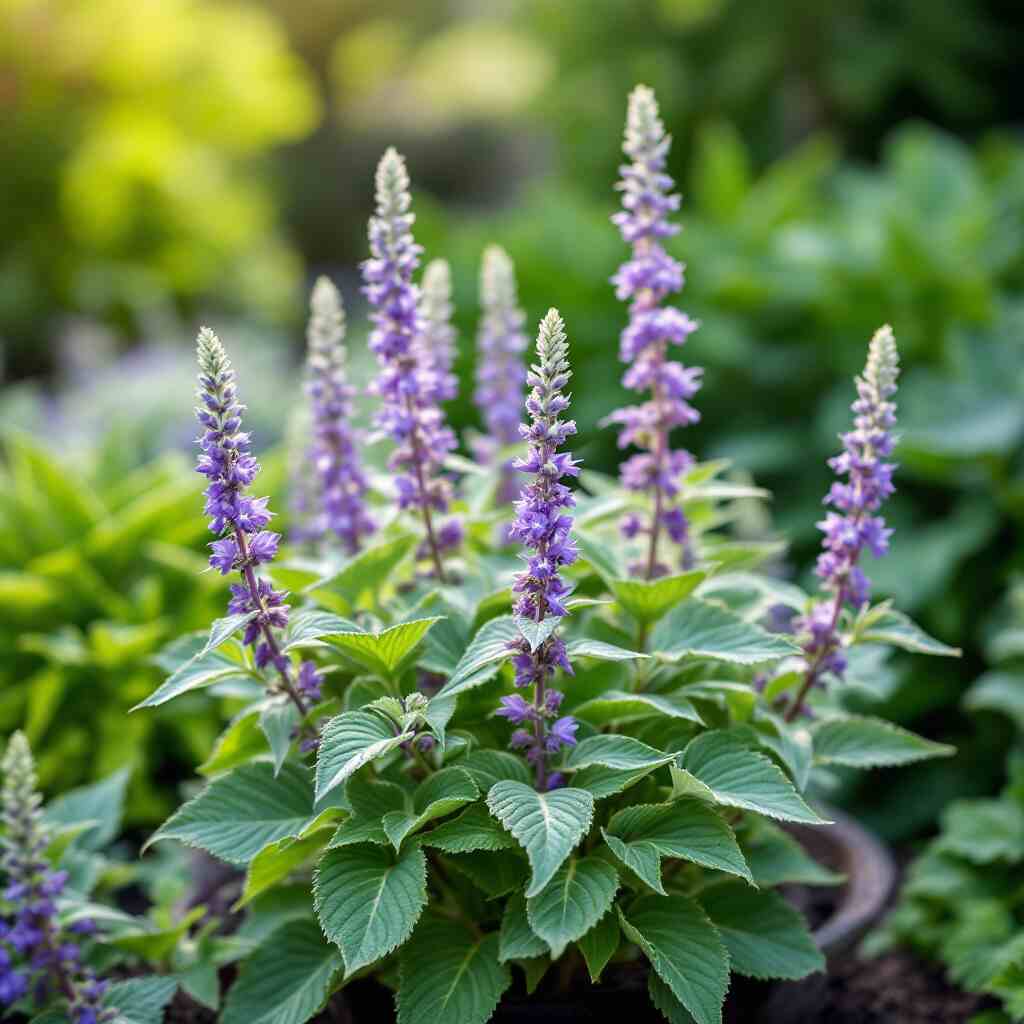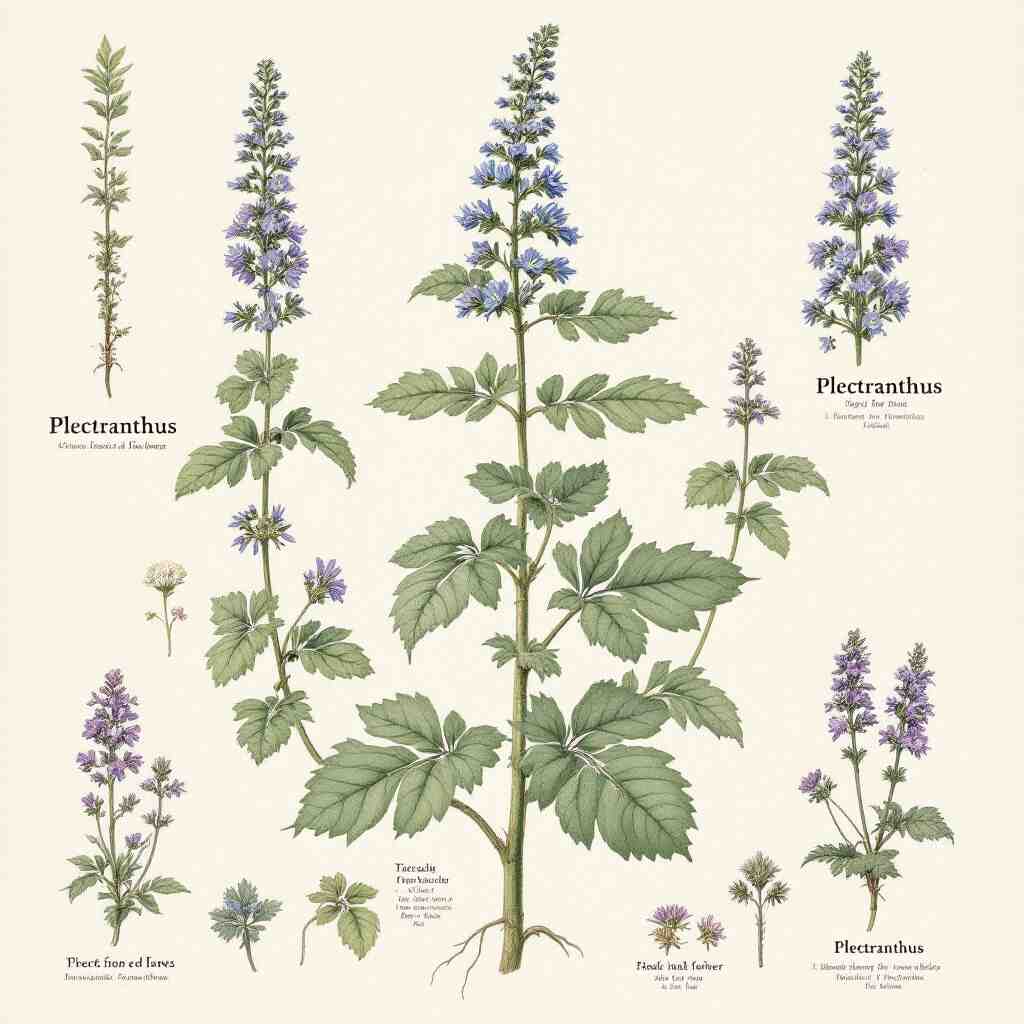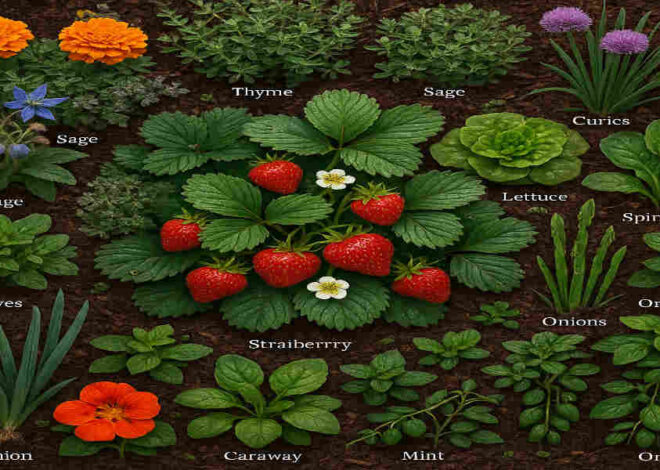
Amazing Benefits of Plectranthus for Your Home Garden
Did you know that plectranthus plants can thrive for years with minimal care and attract various pollinators to your garden, enhancing biodiversity? This versatile genus, a favorite among garden enthusiasts worldwide, offers numerous advantages that make it an outstanding addition to any garden space.
What is Plectranthus?

Botanical Background
Plectranthus belongs to the Lamiaceae family and is notable for its diverse and aromatic species. Originating from warm climates across Africa, Asia, and Australia, this genus includes over 350 species, each with unique characteristics.
Overview of Species
The diversity within the plectranthus genus is vast, with species ranging from ground covers to shrubs. Some of the most popular types include the ornamental Coleus (Plectranthus scutellarioides) and the fragrant Cuban oregano (Plectranthus amboinicus).
Key Characteristics
Typically, plectranthus plants feature lush, often velvety leaves and can produce spikes of attractive flowers under the right conditions. Their growth habits make them excellent choices for both ground cover and vertical garden elements.
Why Gardeners Love Plectranthus
Gardeners are drawn to these plants for their versatility, beauty, and ease of care. They can thrive in a wide range of environments and require minimal maintenance.
Amazing Benefits of Plectranthus in Your Garden
Perennial Powerhouse
- Lifespan: Many plectranthus varieties are perennials, thriving for 5–10 years.
- Regeneration: These plants can regrow from their robust root systems each spring, even after going dormant in the winter.
- Cost and Labor Savings: With less frequent replanting, gardeners save time and resources.
Low Maintenance and Resilient
- Drought Tolerance: Plectranthus can survive dry periods with little water.
- Pest Resistance: The aromatic nature of their leaves naturally repels many garden pests.
- Adaptability: They are unfussy about soil and light conditions, making them easy to grow in varied settings.
Enhances Garden Aesthetics
- Foliage: The leaves of plectranthus are green and can be variegated with purples, silvers, and creams.
- Flowers: Their flowers bloom primarily in late summer, providing a splash of color when many other plants start to fade.
- Versatility: Ideal for borders, containers, or hanging plants, they offer numerous decorative possibilities.
Ecological Benefits
- Supports Pollinators: The flowers and fragrant foliage attract bees and butterflies.
- Companion Planting: They can be planted alongside other species, such as marigolds and basil, to enhance garden health and pest resistance.
- Soil Health: Plectranthus helps stabilize soil and contributes to the overall resilience of the garden ecosystem.
Indoor and Outdoor Versatility
- Indoor Growth: These plants can also thrive indoors, purifying the air and adding lush greenery to living spaces.
- Outdoor Uses: They enhance all-size patios, balconies, and garden beds.
Popular Varieties of Plectranthus
Here are some top species/cultivars of plectranthus, each known for unique traits and ideal uses within home and garden settings:
| Variety | Description | Best Uses |
|---|---|---|
| Plectranthus amboinicus (Cuban oregano) | Thick, fuzzy leaves with a strong, pleasant aroma. | Culinary, medicinal, ornamental |
| Plectranthus scutellarioides (Coleus) | Highly decorative, colorful foliage. | Borders, containers |
| Plectranthus verticillatus (Swedish Ivy) | Trailing growth habit with glossy leaves. | Hanging baskets, ground covers |
| Plectranthus argentatus (Silver Spurflower) | Silvery leaves with a velvety texture. | Accent planting, foliage contrast |
These varieties showcase plectranthus’ adaptability and aesthetic appeal, making it easy to find a type that fits any garden design or purpose.
How to Grow Plectranthus: Step-by-Step Guide
Choosing the Right Location
- Sunlight Requirements: Prefers full sun to partial shade.
- Soil Preferences: Thrives in well-drained, moderately fertile soil.
Planting Tips
- Best Seasons: Spring or early summer for outdoor planting.
- Spacing and Depth: Plant at about an inch depth, spaced according to the variety’s spread potential.
Watering and Feeding
- Watering: Regular during hot weather, less so in cooler months.
- Fertilizer: Use a balanced, slow-release fertilizer to encourage growth without overwhelming the plant.
Pruning and Maintenance
- Pruning: Trim back in late winter or early spring to promote bushier growth and maintain plant health.
- Managing Overgrowth: Regularly check and manage the spread to keep your plectranthus looking its best.
Propagation
- Methods: Easily propagated by stem cuttings, division, or seeds.
- Instructions: Choose a healthy stem, cut it below a node, and plant it in moist soil. It should root in a few weeks.
Plectranthus in Garden Design
Landscape Uses
- Borders and Edging: Plectranthus creates vibrant, lush borders around garden beds or walkways.
- Ground Cover: Excellent for covering large areas or underplanting taller plants, helping to suppress weeds.
Container Gardening
- Pots and Hanging Baskets: Their cascading habit makes them perfect for elevated displays.
- Design Ideas: Combine with other shade-loving plants for a varied, attractive container garden.
Companion Planting
- Ideal Partners: Pair with plants with similar light and water needs and benefit from plectranthus’ pest-repelling properties.
Seasonal Care for Plectranthus
Spring and Summer
- Active Growth: Increase watering and feeding as the plant grows. Regular pruning helps maintain shape and health.
Autumn and Winter
- Preparing for Dormancy: Reduce watering and prune back extensively to help the plant survive the cooler months.
- Overwintering Indoors: If in a frigid climate, consider bringing plectranthus indoors to protect it from frost damage.
Troubleshooting Common Problems
From yellowing leaves to root rot, we’ll cover the common issues faced by plectranthus growers and provide practical solutions to keep your plants healthy and thriving.
Plectranthus: Myths and Lesser-Known Facts
We’ll debunk myths and share intriguing facts about plectranthus’s cultural significance and historical uses, enhancing your appreciation of this diverse genus.
Conclusion
We hope this guide inspires you to incorporate plectranthus into your garden. Its beauty, ease of care, and ecological benefits make it a valuable addition to any outdoor or indoor space. Share your experiences, subscribe for gardening tips, or explore plectranthus varieties to enhance your green spaces.
You may also read (how do i properly store dahlia tubers for winter)


